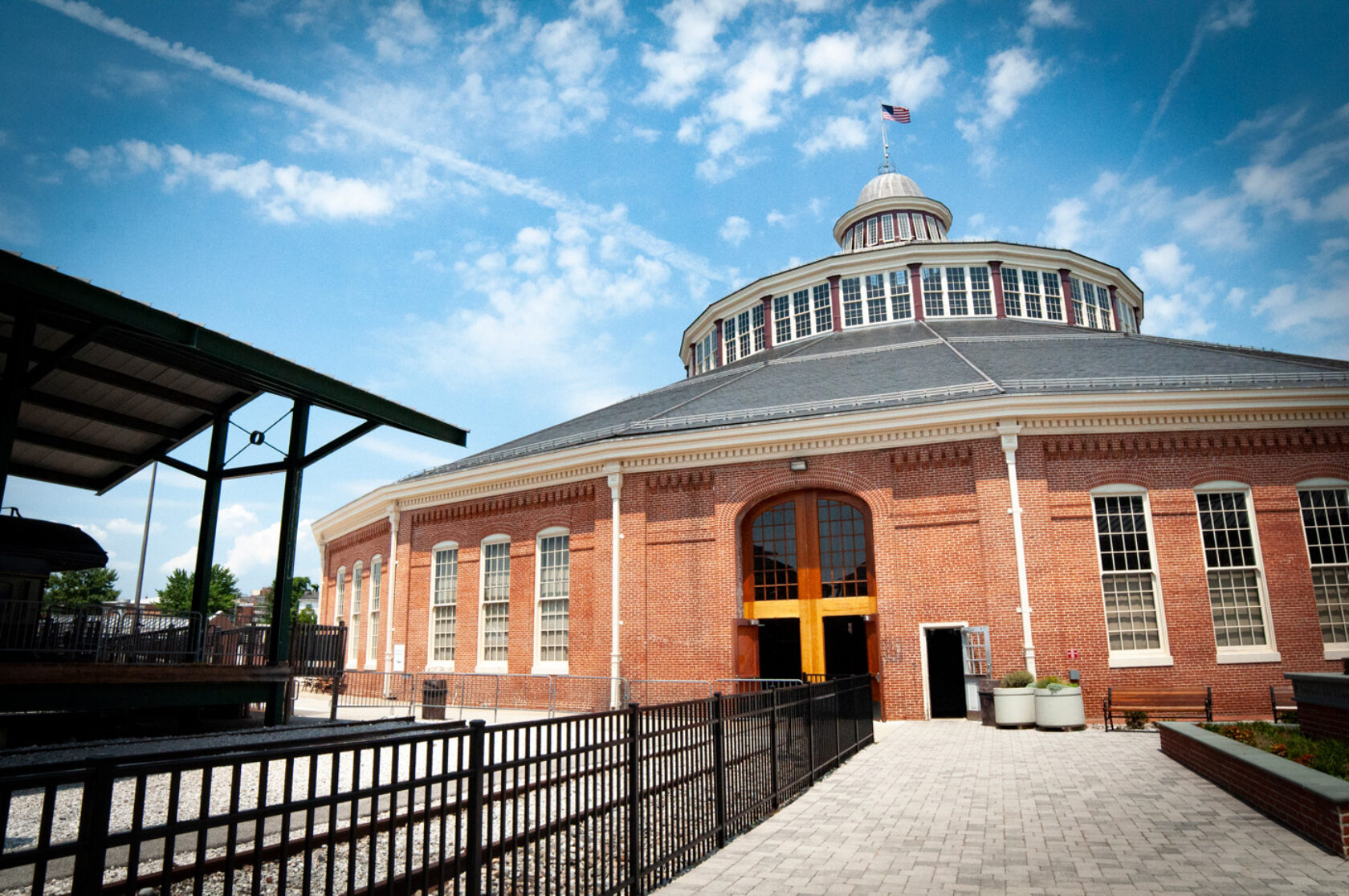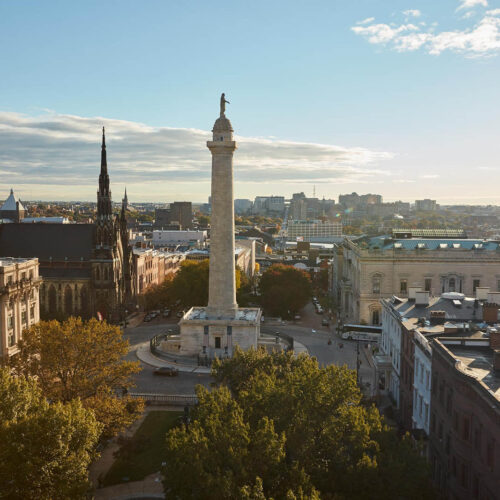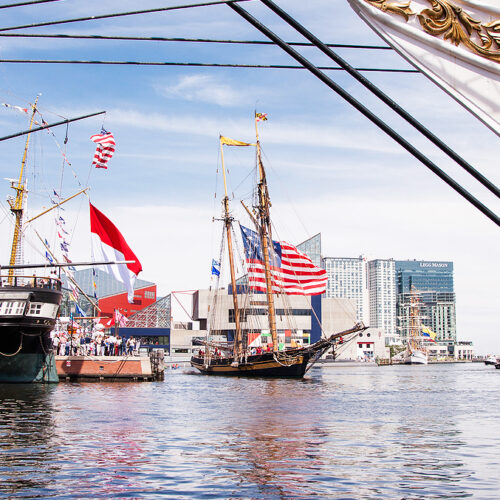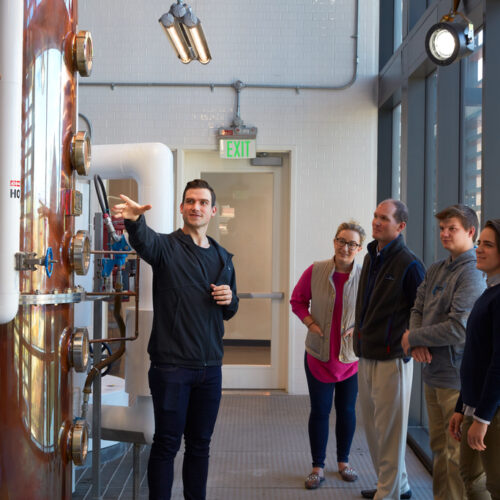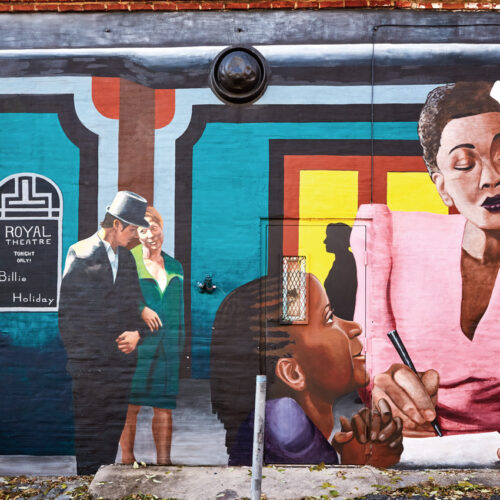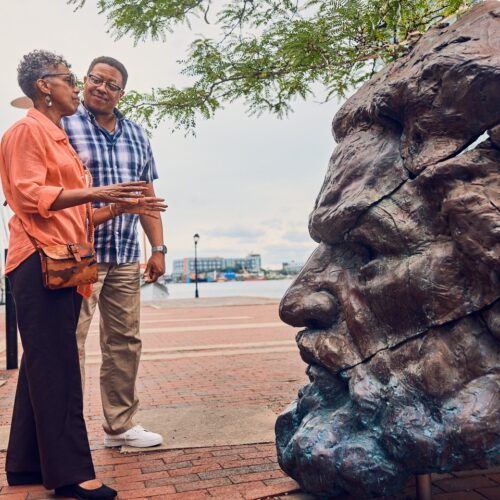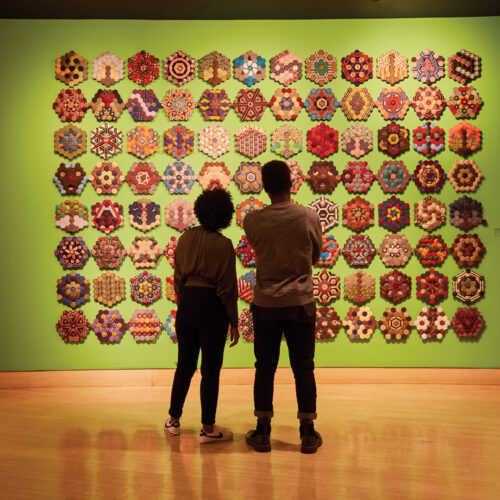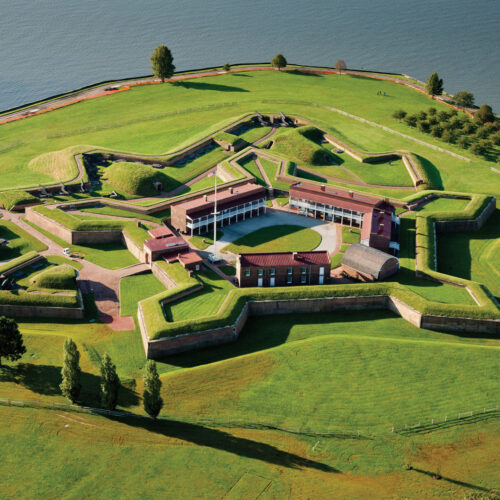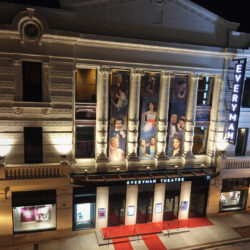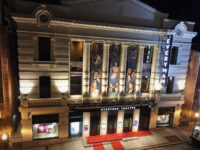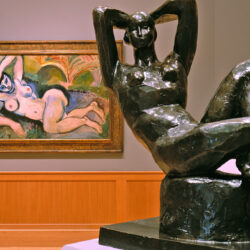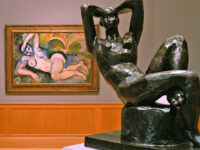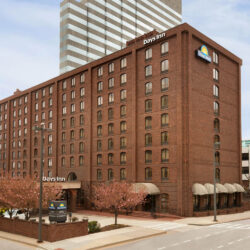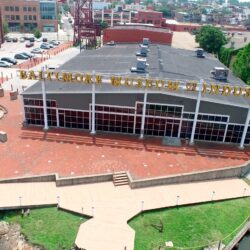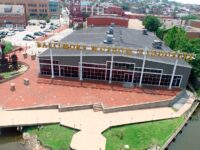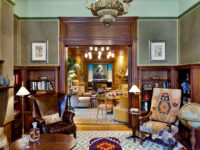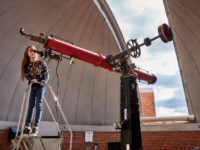City of Firsts: Baltimore’s Milestone Achievements
From architectural marvels to social justice reform, Baltimore's always been ahead of the curve.
Innovation is built into the very fabric of Baltimore—in fact, Charm City’s nearly 300-year-history is dotted with significant achievements and first-ever landmarks, from the big ones, like the writing of the national anthem, to more humble claims-to-fame, like the invention of the snowball. Want to go deep on Baltimore’s firsts? Watch the video below and keep reading to explore all the ways the city has made history.
Historic Baltimore Landmarks
The Original Washington Monument
Arguably the first major architectural monument to honor George Washington, Baltimore’s Washington Monument was built 33 years before the one in D.C. The structure has weathered nearly 200 years’ worth of history, celebrations and events, and continues to stand tall as the epicenter of Mount Vernon. Visitors to the monument can tour the inside and climb the 227 marble steps to the top for an outstanding view of the city.

Lush green squares surround the Washington Monument, making it the perfect place to picnic on a warm summer day.
The Oldest Continually Operating Public Market
The Baltimore Public Market System is the oldest public market system in the United States, and downtown’s Lexington Market, opened in 1782, is the country’s oldest continually operating public market. A recent $40-million renovation preserved the building’s historic architecture and added a new public plaza and indoor space for more than 45 vendors.
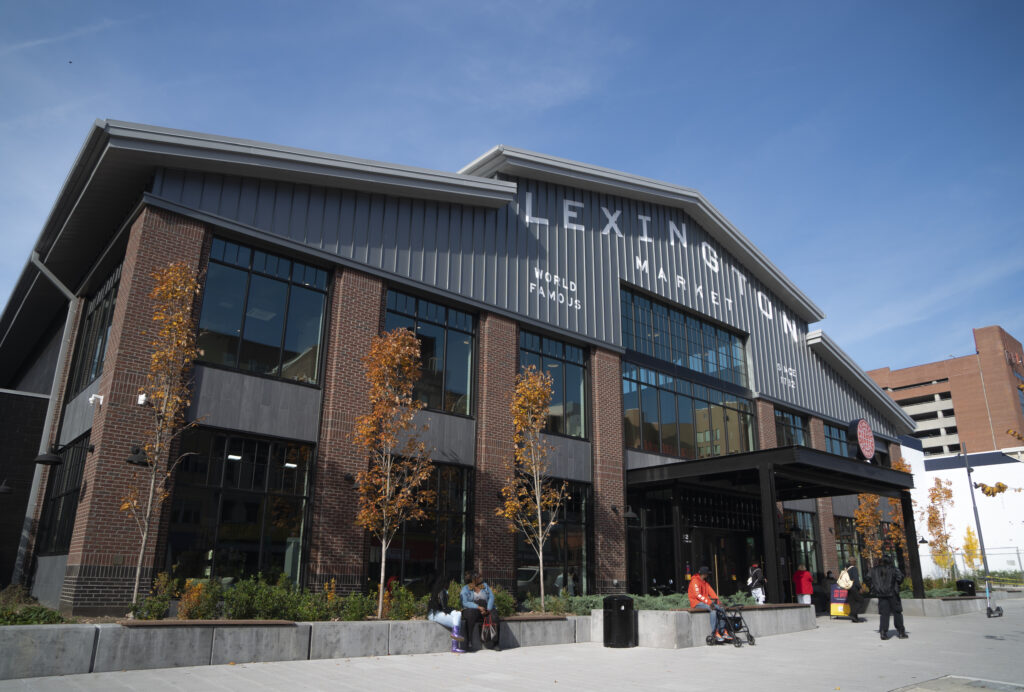
The new Lexington Market building offers a combination of old favorites and new vendors.
The Oldest Museum Building
Just north of the Inner Harbor is The Peale, the first museum purposefully built in the U.S. Artist Rembrandt Peale opened his “Museum and Gallery of Fine Arts” in 1814 and you can still visit today to peruse a collection of Baltimore stories and community art. The museum also frequently hosts author talks, performances and immersive experiences to foster creative experimentation and collaboration.
The Nation’s First Catholic Cathedral
America’s first Catholic cathedral, the Basilica of the Assumption in Mount Vernon, started construction in 1806 and was completed in 1863. It was designed by architect Benjamin Latrobe, who also designed the United States Capitol, and employs a neo-classical design that symbolized the newly formed nation’s approach to religious freedom. The Basilica is free to visit any day of the week, and guided tours are offered Wednesday and Friday from 9 a.m. to 12 p.m. and Sunday following the 10:45 a.m. mass.
The Oldest Snowball Stand in the Country
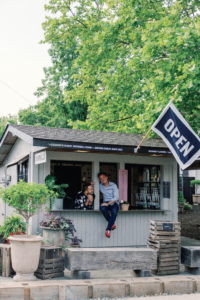
Snowballs are the perfect summer treat, consisting of shaved ice and commonly topped with marshmallow.
Housed at The Margaret Cleveland Walther Gardens & Nursery, itself a century-old institution in Hamilton-Lauraville, The Peggy is the oldest snowball stand in the country. The quintessential Maryland treat consists of a cup of finely shaved ice covered with flavored syrup. Although there are dozens of flavors to choose from, egg custard (plus a dollop of marshmallow on top) is the most traditional and favored by many locals.
Game-Changing Charm City "Firsts"
The First Clipper Ships
Unless you’re a maritime enthusiast, you might not know that Baltimore was a major player in the shipping industry. In fact, the very first clipper ships, known for their speed, were built in Fell’s Point. Learn all about Baltimore’s past as a shipbuilding city at the Frederick Douglass-Isaac Myers Maritime Park, which showcases African American contributions to the city’s maritime industries on the site of the nation’s first African American-owned shipyard.
The First Commercial Streetcar Line
In 1885, Baltimore made history with the first commercial electric streetcar line. Learn the history of this public transport relic at the Baltimore Streetcar Museum in Station North, which offers a collection of authentic Baltimore railway vehicles dating to 1859, plus artifacts, displays, tours, photographs, archive materials and more.

Admission to the Baltimore Streetcar Museum includes unlimited rides on the collection of streetcars.
The First School to Offer a Doctorate in Dental Surgery
One of the world’s first dental colleges, the Baltimore College of Dental Surgery was the first to offer a Doctor of Dental Surgery degree. Now, the original Eutaw Street building is on the National Register of Historic Places, and the college has transformed into the University of Maryland School of Dentistry. Learn all about dentistry and its place in Baltimore history by visiting the National Museum of Dentistry on the university’s campus. This niche museum counts 40,000 objects in its collection, including George Washington’s dentures and vintage toothbrushes, and features exhibits on dental forensics and animal teeth.
The First Railroad
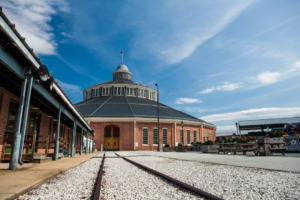
The B&O Railroad Museum offers tours along the first mile of track laid in America.
At the B&O Railroad Museum in Pigtown, visitors can take a ride along the first mile and a half of railroad track laid in America and see nearly 200 pieces of locomotives and rolling stock, plus thousands of smaller artifacts and a collection of model and toy trains. A permanent exhibit called “The Underground Railroad: Freedom Seekers on the B&O Railroad” gives an intimate look at the lives and journeys of 27 individuals who sought freedom from slavery along the B&O. Just a block away is the Irish American Museum, dedicated to the Irish immigrants who laid the historic railroad track.
The First Public Gas Streetlamp
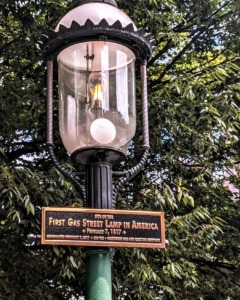
View a replica of the first public gas streetlamp installed in America on East Baltimore Street.
Baltimore was the first city in America to use gas streetlamps. Influenced by his findings in London, Rembrandt Peale advocated for the use of gas lighting in Baltimore to improve brightness and efficiency over traditional oil lamps. He, along with prominent Baltimore citizens, established the “Gas Light Company of Baltimore” which installed the first gas streetlamp on Market Street (now East Baltimore Street) where an exact replica stands today.
Baltimore's Revolutionary Milestones
The Birthplace of the Star-Spangled Banner
Mary Pickersgill was commissioned to sew a garrison flag for Fort McHenry in 1813, which she completed in her home, which is now a museum, in Jonestown. That flag would then be flown over the fort after it withstood 25 hours of British bombardment and achieved victory for the United States in the Battle of Baltimore, thus inspiring Francis Scott Key to pen “The Star-Spangled Banner.” Nowadays, visitors can tour the fort, witness reenactments and possibly raise a flag.
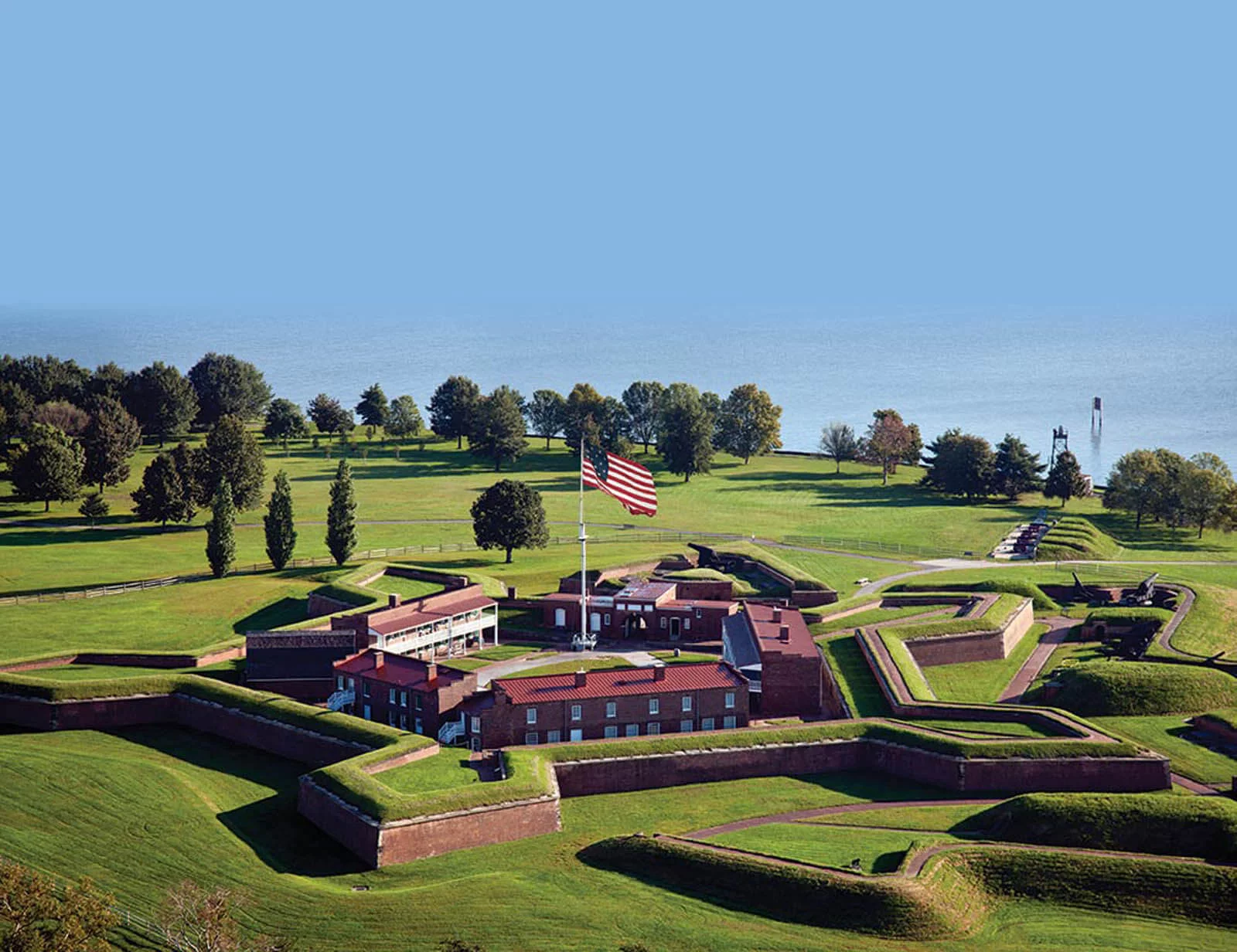
A large American flag flies from the center of Fort McHenry in Baltimore.
The First Successful Sit-In
In 1955—five years before the Greensboro, NC sit-ins—Morgan State students staged the country’s first successful lunch-counter sit-in when they refused to leave a Read’s Drugstore. Just a few days later, Read’s announced that all 39 of its Baltimore-area stores would desegregate. The historic counter, as well as educational signs detailing other ways that Morgan students contributed to the Civil Rights Movement, is on display in the university’s student center, which is free and open to the public.
An Early Challenge to Jim Crow Transportation Laws
More than ten years before Rosa Parks refused to give up her seat for a white man on a bus in Montgomery, Alabama, a Baltimore woman named Irene Morgan refused to give up her seat on a Greyhound bus in Virginia. After she was arrested, her case was picked up by Thurgood Marshall and the NAACP and went all the way to the Supreme Court, which ruled 6-1 in Irene’s favor and found segregation in interstate travel to be unconstitutional. You can learn more about Irene’s story during the Baltimore Museum of Industry’s “Forging Progress” tour, which discusses the intersections of Baltimore’s labor and civil rights movements.
More Baltimore Firsts
- 1743: The Maryland Jockey Club becomes the first professional sports organization in the United States.
- 1798: Fort McHenry becomes the first fort built by the U.S. Government.
- 1815: Battle Monument becomes the first War Memorial in the U.S. to honor soldiers instead of just generals.
- 1815: First canning of oysters by Thomas Kensett (learn more about the history of canning at the Baltimore Museum of Industry!).
- 1886: The Enoch Pratt Free Library becomes the first public library system with branches.
- 1892: First bottle caps invented by William Painter, founder of the Crown Cork and Seal Company.
- 1892: First OUIJA board invented and patented by Elijah Bond and Helen Peters and distributed by William Fuld.
- 1900: First duckpin bowling alley invented by Diamond Bowling Alleys.
- 1916: Baltimore Symphony Orchestra becomes the first municipal orchestra supported by public funds.
- 1921: Shuffle Along, written by Baltimorean Eubie Blake, becomes the first Black musical on Broadway.
- 1936: The Afro-American Newspaper, which is still family-owned and running today, becomes the first Black-owned newspaper chain.
- 1967: Thurgood Marshall becomes the first African American to serve on the U.S. Supreme Court.
